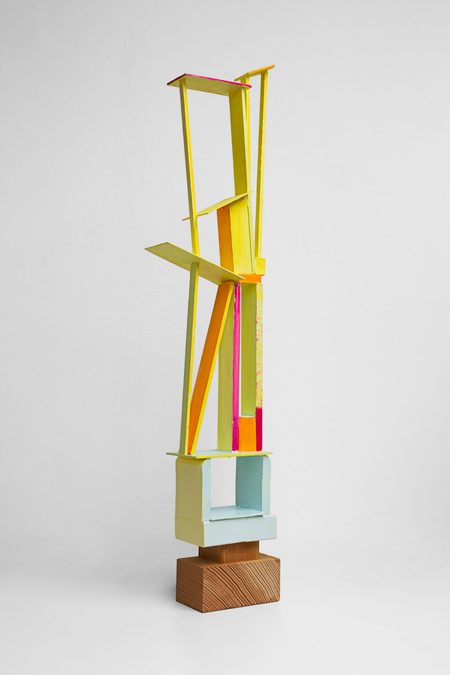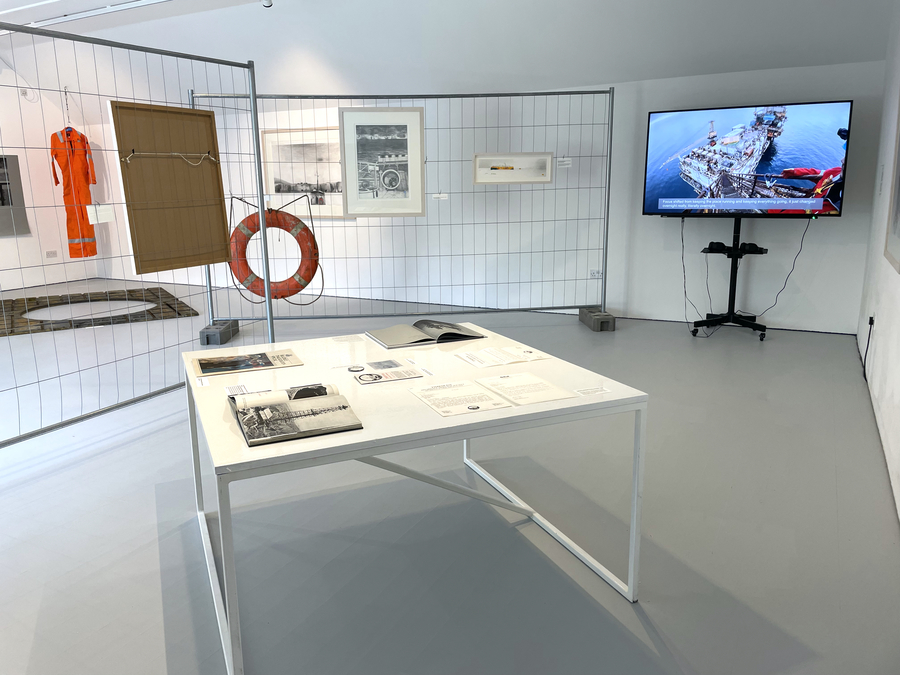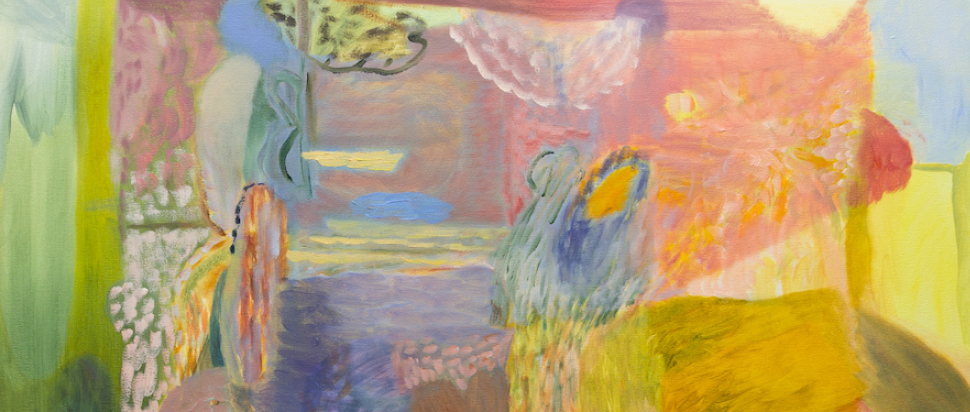Space and Time: Scotland's rural art offerings
We take a tour of some of Scotland's rural art institutions to find out what they have on offer this summer
From the Highlands to the Islands, Scotland is home to many rural arts spaces that provide a thought-provoking experience year-round – but which are particularly appealing with the warmer days and longer nights of summer. There is sometimes a suggestion that rural spaces somehow cannot programme critical and radical work in the same way that art spaces in cities can – but this is disproved by the radical work taking place across Scotland.
These spaces are far more likely to streamline community engagement into their programming, and although their footfall might be lower than in Glasgow or Edinburgh, they are more likely to develop relationships with repeat visitors who have a deep connection to the area. These spaces also provide fantastic opportunities for creatives to undertake residencies in quieter, intimate, more contemplative environments away from the over-saturation and intensity of urban spaces. Since the pandemic, an interest in the potential that rural spaces hold has been reinvigorated, and now some of the most exciting exhibitions and festivals take place along Scotland’s coasts, on her islands and amongst her forests.
Close to Dumfries, Cample Line, named for the River Cample that flows only a few feet away, is housed in a historic building that was formerly a row of mill workers' cottages. They present a year-round programme of exhibitions and screenings, as well as an ambitious public engagement programme that includes workshops with schools, walks led by artists and workshops relating to exhibitions in the gallery. Cample Line’s summer programme kicks off this month, with two exhibitions opening on 8 July. Amy Winstanley’s Slim Glimpses is named for the ‘small moments’ that intervene and break through into our daily lives, but which are often forgotten. Winstanley’s vivid and rich paintings allude to vegetation, water, hills, and show a deep connection to the rural environment. In Cample Line’s upstairs space, Rowan Mace will present an exhibition of new and recent sculptures titled Time’s Light. Mace’s painterly sculptural works express both a rigorous investigation into balance, light and structure, while also having a soft playfulness and intimacy.

untitled by Rowan Mace, 2021. Photo: Ocean Teale
Meanwhile, Hospitalfield in Arbroath is more focused on providing crucial support for artists through a dynamic programme of national and international residencies – including with partner institutions. Over the summer, you can see a series of sculptures by Emma Hart and a bronze sculpture by Eduardo Paolozzi in Hospitalfield’s gardens – there’s also a series of events taking place over the warmer months, which can be found on their website. Cove Park also provides a similar programme of residencies, for writers, visual artists, musicians and more. Set on the stunning Cowal Peninsula, Cove Park holds several call-outs every year for residencies, with a focus on international collaboration and exchange.
Scotland’s west coast islands also host some unique and spellbinding spaces. The Bothy Project operates to offer opportunities for creatives to undertake residencies in a ‘unique and inspirational environment’ – Sweeney’s Bothy, on the island of Eigg, close to Rum. The residency provides an opportunity for artists to adapt to a slower, more intentional pace of life in a beautiful natural setting and small community. Also set in a unique location, Mount Stuart on the Isle of Bute holds an experimental programme of exhibitions, alongside providing support for artists across Scotland. As well as exploring the beautiful house and gardens, visitors this summer can enjoy Monster Chetwynd’s Moths, a collaboration with local school-children in the shape of sculptures, works on paper and film. Opening 2 September, Sekai Machache will present Svikiro, comprising of several short film works which will present a model for a decolonised future archive built on collaboration.
Timespan, in Helmsdale in the Highlands, is real proof of how radical art spaces in rural areas can be. Since its founding in 1986, the space has consistently produced progressive, community-focused programming with an international scope. Recent exhibitions, screenings and talks have focused on an array of themes, including the relationship between Highland communities and the transatlantic slave trade, land and food justice and the transformative power of gossip. Last month, Timespan opened a major exhibition titled Beatrice, as part of its ongoing project Coastal Commons. Giulia Gregnanin, who became the new director and curator of Timespan in 2022, says this long-term project "aims to reflect on extractivism, its repercussions, violence, injustices, and to contemplate climate justice and reparation" in the context of the Highlands and beyond.
The exhibition, the first episode or chapter in this project, looks specifically to the legacy and repercussions of the Beatrice oil field, which lies less than 20 miles off the coast of Helmsdale. The oil field began operations in 1980 and was finally decommissioned in 2017, with the 84-turbine Beatrice Offshore Windfarm now standing in its place ("a forest of wind turbines shielding a rusty skeleton," as Gregnanin beautifully visualises). Despite its closure, the oil field has left a profound legacy on the local community. Not only has it "become ingrained in the emotional landscape… it has also contributed to damaging the marine ecosystem, increasing pollution, and exacerbating the effects of the climate crisis," like many other North Sea oil fields.
The transition to the offshore wind farm has not been smooth either – the construction of pylons and cable systems has been disruptive, and has created concerns around the destruction of natural habitats. Gregnanin notes a new project by SSEN to build a new pylon route, which "has generated significant turmoil, with campaigners opposing its construction". However, she crucially vouches that "while wind farms are not perfect and still involve other forms of extractivism, we don't have time to delay the transition – the next step should be considering the socialisation and collectivisation of wind energy since wind is a natural resource that should not belong to anyone."

Beatrice exhibiton view. Credit: Timespan.
Although the exhibition is a localised project, it works across the geographical axis of the North Sea, inviting three artists working in different national contexts who have a relationship with this body of water. Sue Jane Taylor, who resides in Dornoch (less than 30 miles from Helmsdale), has spent the last 30 years researching and documenting both inshore and offshore oil rigs along this coast. Meanwhile, Oliver Ressler shot his film Carbon and Captivity at the Technology Centre in Mongstad, Norway, Europe's largest carbon capture and storage centre, while Tanja Engelberts (based in the Netherlands) has spent six years on oil rigs on the eastern side of the North Sea. With Coastal Commons, Gregnanin is working with the aim "to expand beyond our remote corner of the Highlands and engage activists, practitioners, artists, and researchers to foster transnational alliances." Looking beyond the Highlands, she affirms the importance of "ackowledging the historical responsibility of Western countries in the climate crisis, and we believe that cultural organisations have a duty to address this."
Perhaps the most fundamental aspect of the exhibition is an investigation into Timespan’s origins. Instead of shying away from it like so many institutions do, Timespan has bravely decided to face this history head-on with this exhibition. In the early 1980s, Timespan’s founders were looking to acquire funds to build a cultural centre in Helmsdale, and one of the potential investors was BritOil. Interestingly (and in stark contrast to now, where arts institutions often do their best to hide donations from fossil fuel companies), one of the conditions of BritOil’s investment was that an exhibition about the local oil industry would have to feature at the museum’s entrance.
Gregnanin understands this move as one of BritOil’s methods of controlling the narrative around the fossil fuel industry in the region. In response to this discovery, she decided to take action. The exhibition features initial correspondence between BritOil and Timespan from the 1980s, putting on display this attempt by the fossil fuel industry to control local narratives around extractivism. Furthermore, Timespan’s original logo (designed by one of BritOil’s founders, Penny Woodley) which features an oil rig, has been used as the emblem of this exhibition. This acknowledgement is deeply profound, but vital – "without delving into our institutional history," Gregnanin says, "a project like Coastal Commons would have been mere greenwashing."
Beatrice, Timespan, Helmsdale, until 30 Sep
